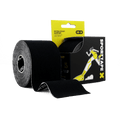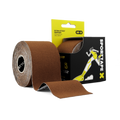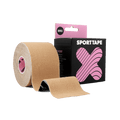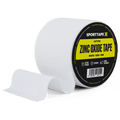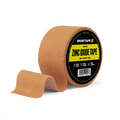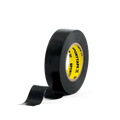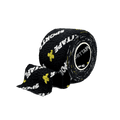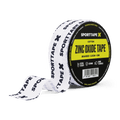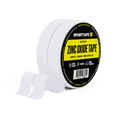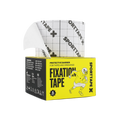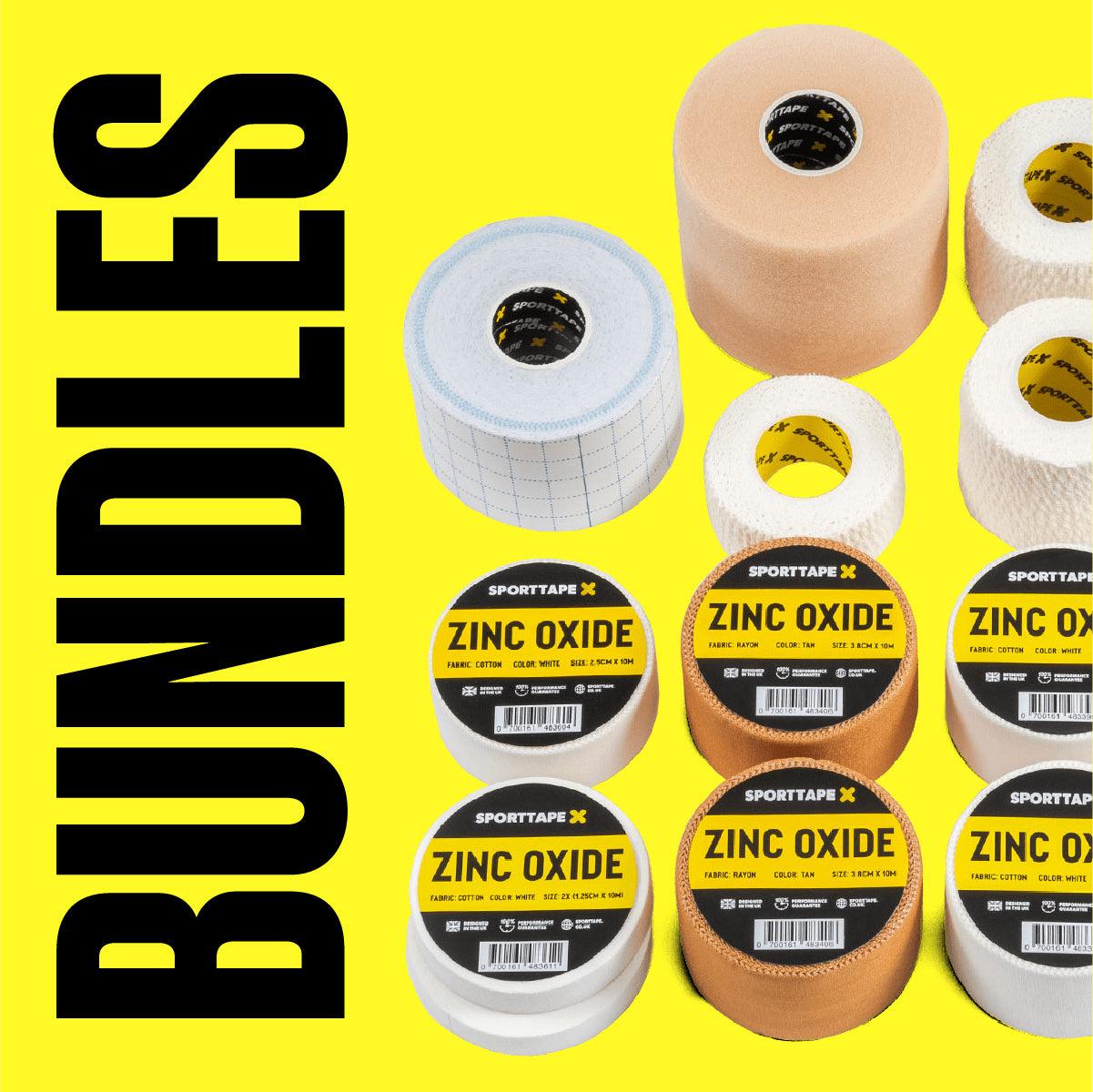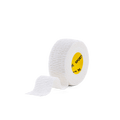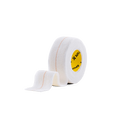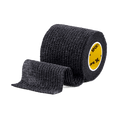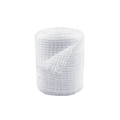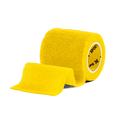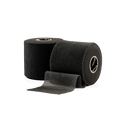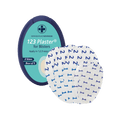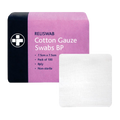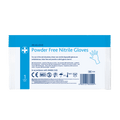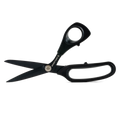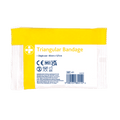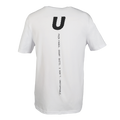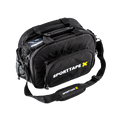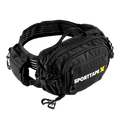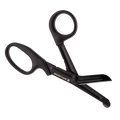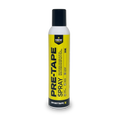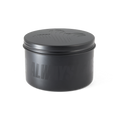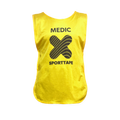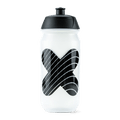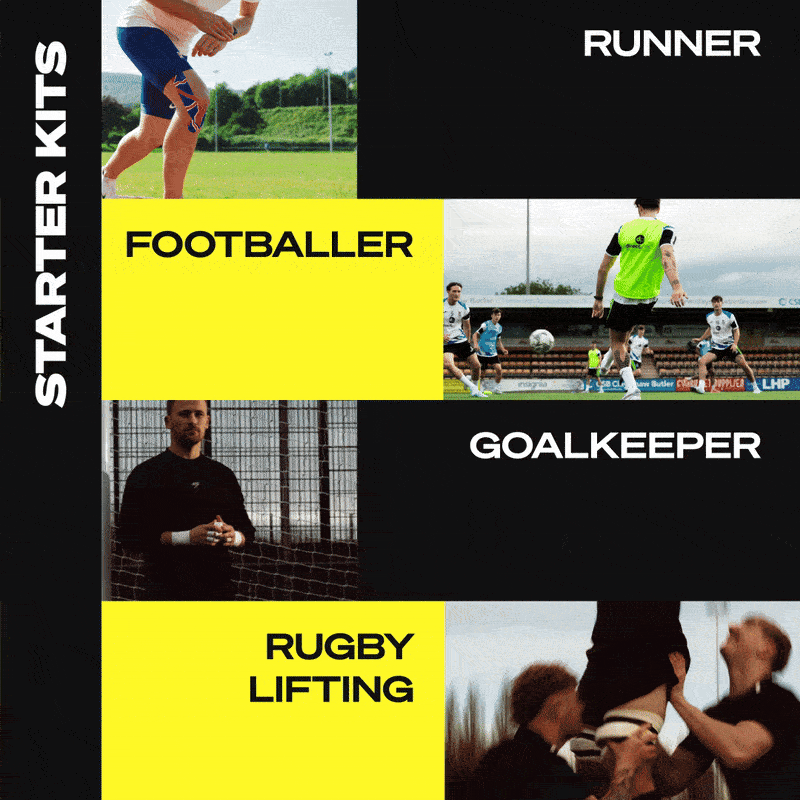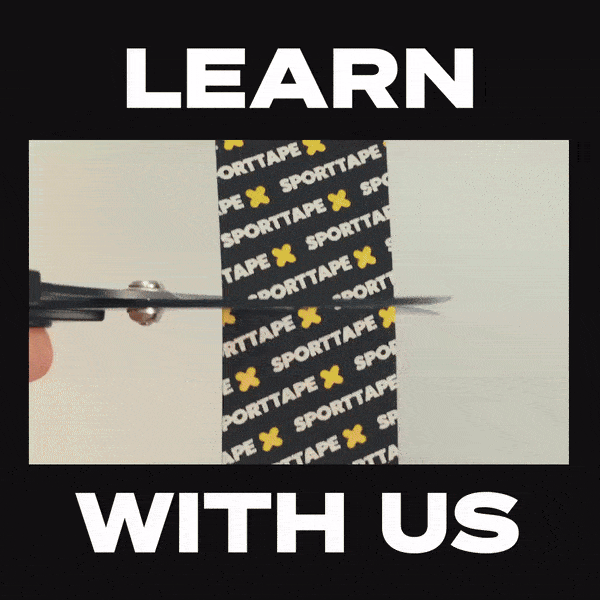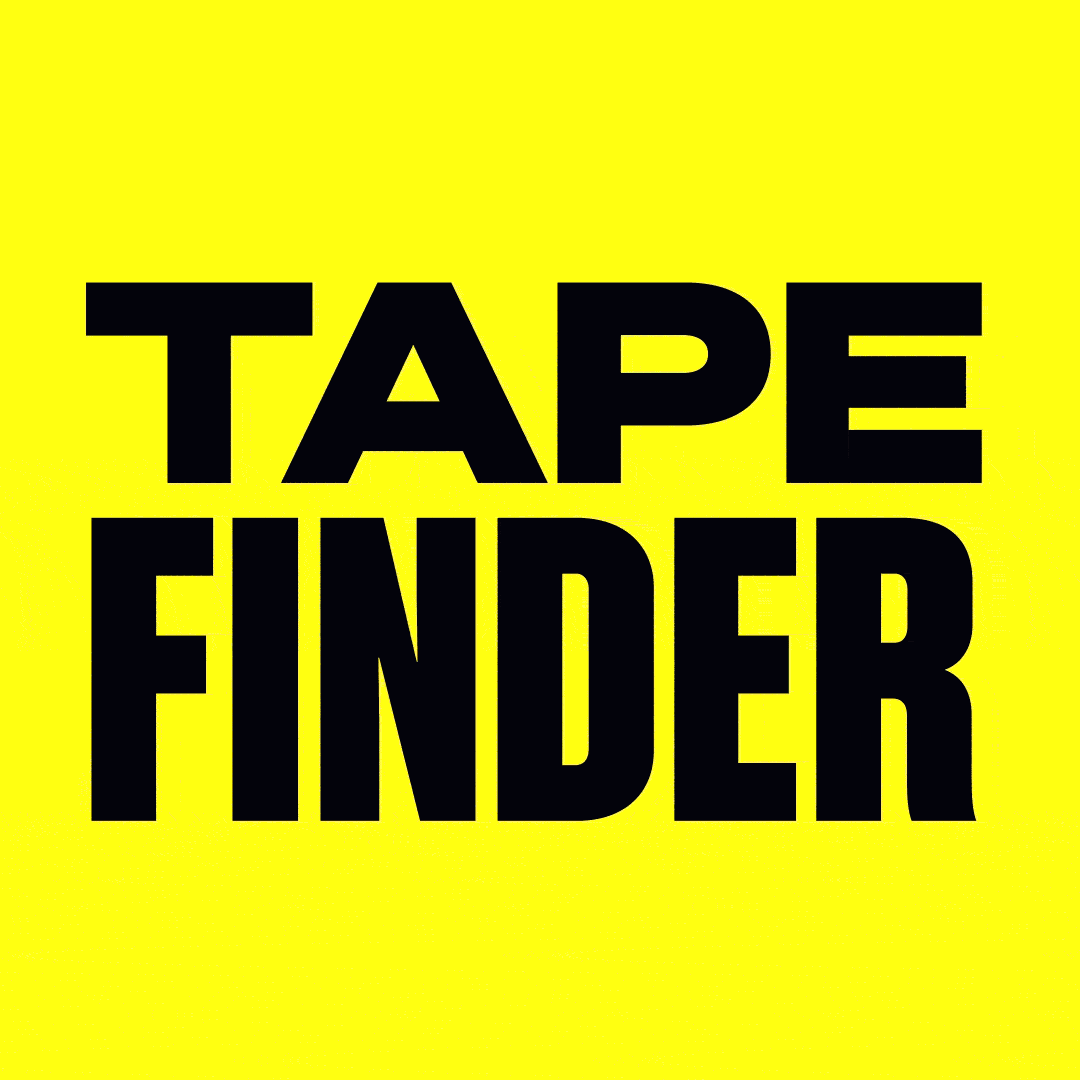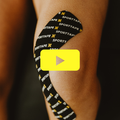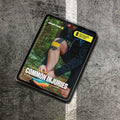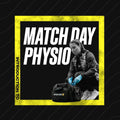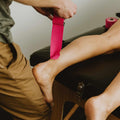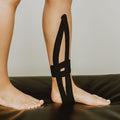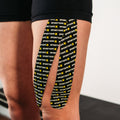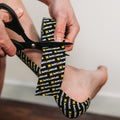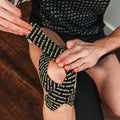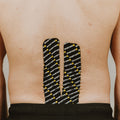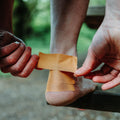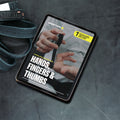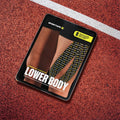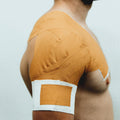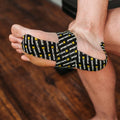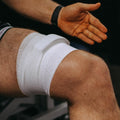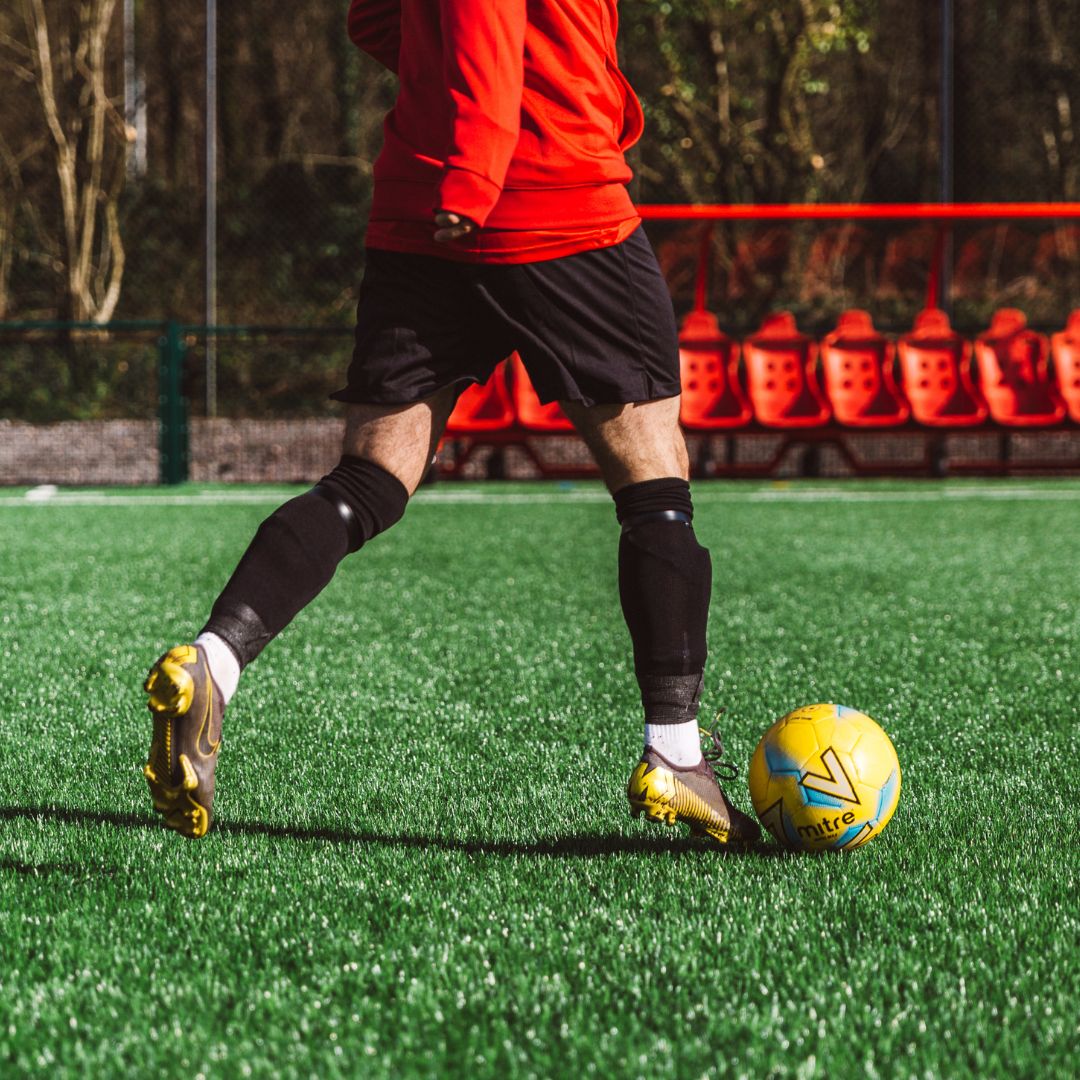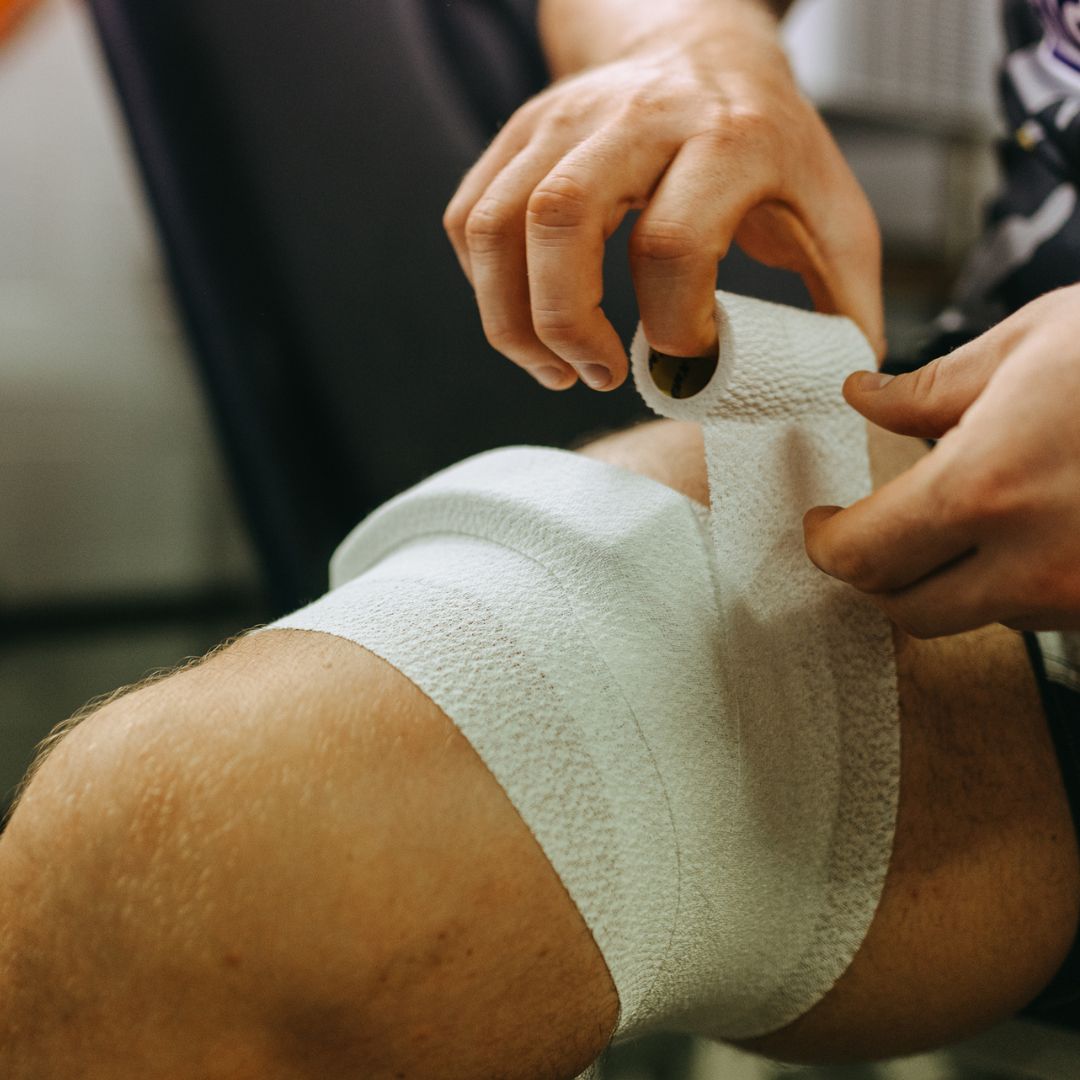Looking for some football taping techniques to help you get through a full 90 feeling as fresh as possible? You're in the right place.
As most physios will tell you, there's lots of different ways that tape is used in football, but these are, from our experience, the top 5 most common that we tend to see whenever we're watching on from the sidelines...
TAPING TECHNIQUES FOR FOOTBALL:
KEEPING YOUR SOCKS AND SHIN PADS SECURE
Anyone who’s played football knows socks slipping down and shin pads moving around can be super annoying. That’s why players use Sock Wrap and Sock Tape to keep everything in place.
Sock Wrap is a self-adhesive bandage that sticks to itself, not your skin, so it’s gentle and can be reused for a few games. It's typically used by footballers of all levels to bridge the gap between your grip socks and team socks, making them feel like one solid layer and helping hold your shin pads steady.
Sock Tape, on the other hand, is the classic PVC tape that comes in different colours to match your kit. It’s sticky and simple to use, giving a strong hold for your socks and shin pads, especially if you want that extra security.
Some players add Underwrap underneath before taping to protect the skin from irritation and blisters. It acts like a cushion, making taping more comfortable, especially during some of those tougher matches.
Whether you prefer Sock Wrap, Sock Tape, or both, taping your socks and shin pads properly means less fuss and more focus on the game.
Wrap, rip and stick.
ANKLE STRAPPING FOR SUPPORT AND SECURITY
Ankle strapping is one of the most common taping techniques in football, mainly because ankles take a beating. Whether it’s from quick changes of direction, awkward landings, or full-on tackles, players often need a bit of extra support to stay on the pitch.
There’s no one-way to strap an ankle, especially for football, but a classic combo we recommend is Tear EAB to hold the ankle in position, followed by some Zinc Oxide Tan Tape to properly lock it down.
Tear EAB is stretchy, which makes it great for wrapping around the joint with a bit of give, while still offering strong support. Once that’s in place, the Zinc Tan is used to reinforce key areas and limit excessive movement. It gives that rigid, secure finish that footballers rely on during high-intensity play.
Some players and physios like to use Underwrap as a base layer before taping, to protect the skin and make removal that little bit easier. It’s not essential, but if you’re strapping up regularly or for a longer session, it can definitely help with comfort.
Whether you’re recovering from a sprain or just playing it safe during a busier playing schedule, a solid ankle strapping can give you the confidence to move freely without worrying about rolling your ankle mid-match.
If you want to learn how to strap an ankle for football, click here!
GOALKEEPER TAPING TECHNIQUES
Goalkeepers put a huge amount of stress through their hands and wrists. Diving, catching, punching, and taking contact all game long. It’s no surprise many of them tape up before matches to help with stability, injury prevention, and confidence when making big saves.
FINGER TAPING
Finger taping is especially popular for protecting joints from sprains or past injuries. A Zinc Oxide Finger Tape is perfect for this. It’s strong, non-stretch, and narrow enough to support the joint without getting in the way. Some keepers prefer a slim strip of Cohesive Bandage if they want more flexibility while still keeping things snug.
WRIST TAPING
Wrist strapping helps prevent hyperextension and adds a sense of security when dealing with shots or crosses. Zinc Oxide offers the most rigid support, Tear EAB gives a balance of stretch and hold, and Cohesive Bandage is ideal for light support. It all depends on how much restriction you’re after and what feels best in your gloves.
LOWER BODY TAPING APPLICATIONS
If you've ever spotted those brightly coloured strips on a player’s leg, you're likely looking at Kinesiology Tape. It’s a pretty popular choice in football, especially for lower body niggles, like tight calves, hamstring strains, or sore knees. Unlike rigid tapes, Kinesiology Tape is flexible and designed to move with the body, helping to reduce muscle fatigue, support injured areas, and even improve blood flow.
You’ll often see it used on hamstrings or calves to ease muscle tension during matches, or on the knee to provide a bit of extra support without limiting mobility. It’s not a magic fix, but it can definitely help players stay comfortable and confident, particularly when managing ongoing issues or coming back from injury.
Some players use it as a preventative measure, while others rely on it for that bit of added reassurance during games. Either way, it’s become a staple in the physio room for good reason.
If you want to learn how to tape your calves, knees, or any other area of your lower body for football, head over to our learn page now!
MAKESHIFT FOOTBALL HAIRBANDS
This one definitely wasn’t what Underwrap was made for, but footballers have turned it into a bit of a style staple. Loads of female players, including the likes of Lucy Bronze, use it as a sort of DIY headband to keep their hair out of their face during games and training. And honestly, it works a treat.
The trick? Wrap it around your leg a few times until it forms a thin, stretchy band, then tie it around your head like a hairband. It’s super lightweight, doesn’t slip, and stays in place for the full 90 minutes without that tight, digging-in feeling you get from some other bands.
We’ve mostly seen it in the women’s game, but lads can get in on it too, if you’re going for that throwback Messi look, this is the move. Bonus points if you match the colour to your kit.
And that's it! Taping for football made easy. If you can think of any other common football taping techniques, let us know. And remember, if you want to learn how to tape better for football, head to our learn page now or drop us an email!


